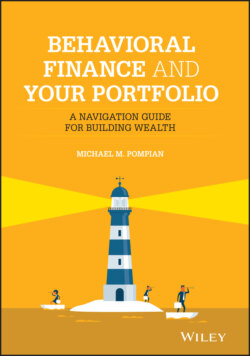Читать книгу Behavioral Finance and Your Portfolio - Michael M. Pompian - Страница 34
Differences between Cognitive and Emotional Biases
ОглавлениеIn this book, behavioral biases are classified as either cognitive or emotional biases, not only because the distinction is straightforward but also because the cognitive-emotional breakdown provides a useful framework for understanding how to effectively deal with them in practice. I recommend thinking about investment decision making as occurring along a (somewhat unrealistic) spectrum from the completely rational decision making of traditional finance to purely emotional decision making. In that context, cognitive biases are basic statistical, information processing, or memory errors that cause the decision to deviate from rationality. Emotional biases are those that arise spontaneously as a result of attitudes and feelings and that cause the decision to deviate from the rational decisions of traditional finance.
Cognitive errors, which stem from basic statistical, information processing, or memory errors, are more easily corrected for than are emotional biases. Why? Investors are better able to adapt their behaviors or modify their processes if the source of the bias is illogical reasoning, even if the investor does not fully understand the investment issues under consideration. For example, an individual may not understand the complex mathematical process used to create a correlation table of asset classes, but he can understand that the process he is using to create a portfolio of uncorrelated investments is best. In other situations, cognitive biases can be thought of as “blind spots” or distortions in the human mind. Cognitive biases do not result from emotional or intellectual predispositions toward certain judgments, but rather from subconscious mental procedures for processing information. In general, because cognitive errors stem from faulty reasoning, better information, education, and advice can often correct for them.
